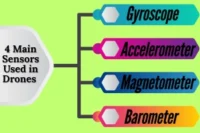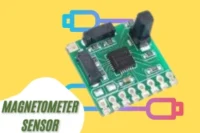Dead Cat vs X Frame: Pick the Frame That Fits Your Style
Published: 27 Jul 2025
Dead cat vs X frame, these two popular drone frame types look similar but work differently. A dead cat frame pushes the front arms outward, giving your camera a cleaner view. An X frame keeps things symmetrical for sharper turns and tighter control. If you are into freestyle flying, the X frame shines. But if smooth video is your goal, dead cat might be better. Understanding how each frame performs in real-life flights can help you choose faster and fly smarter.
1.Freestyle vs Cinematic
When it comes to choosing between a dead cat and an X frame, your flying style plays a big role. If you love freestyle flying—doing flips, rolls, and fast turns, the X frame is usually the better pick. It’s well-balanced, reacts quickly, and handles sharp movements with ease. That’s why most freestyle pilots stick to it. On the other hand, if your goal is to capture smooth, cinematic footage, the dead cat frame has the edge. It shifts the front arms out of the camera’s view, giving you clean, stable shots without propellers showing. Real pilots use X frames for acrobatic tricks and dead cat frames for slow, sweeping videos. So, the right choice depends on how you fly and what you want to film.
2.Prop in View vs Clean Footage
This usually happens because most drones use wide-angle cameras, which capture a broad view that often includes the front arms and props. That’s where the difference between dead cat and X frame designs really shows. The dead cat frame pushes the front arms outward and slightly back, which moves the props out of the camera’s line of sight. This gives you cleaner, clearer footage without needing to crop or edit out spinning blades. The X frame, however, keeps everything symmetrical. While that helps with flight balance, it also puts the front props right in view, especially when using GoPros or action cameras. That means more editing work or living with visible props in your videos. If clean footage is a top priority, the dead cat design solves that problem straight out of the box.
3.Build Experience and Repair Time
When building your own drone, the frame you choose can make things easier or more time-consuming. X frames are generally easier to build, especially for beginners. Their symmetrical layout keeps things simple and straightforward—no odd angles or tricky spacing. You can mount the components quickly and get flying sooner. Dead cat frames, on the other hand, are more camera-focused. The arms are set at different angles to keep props out of view, which means you might need to fine-tune your setup to balance weight and get everything aligned just right. It’s not too hard, but it does take more patience.
When it comes to repairs and spare parts, X frames have a big advantage. Since they’re widely used in freestyle builds, you’ll find lots of compatible parts online or at hobby shops. Swapping out a broken arm or base plate is quick and cheap. Dead cat frames aren’t as common, so finding exact replacements can be harder. You might need to order from specific brands or wait longer for shipping.
4.Real Pilot Feedback: What Flyers Actually Prefer
Ask any drone pilot what they prefer, and their answer often depends on how they fly. Freestyle pilots almost always lean toward X frames. Many say, “X frame is the only way to go for tricks,” and they mean it. These frames offer better balance, tighter control, and quicker response in the air—exactly what you need for flips, rolls, and sudden direction changes. On the flip side, cinematic flyers tend to favor dead cat frames. Their main reason? Clean, prop-free footage. As one long-range pilot put it. Dead cat gives clean footage right out of the camera. It’s ideal for smooth, stable shots and works well with slow-motion clips. The layout helps keep the camera view clear, especially when using wide-angle lenses. So whether you’re chasing tricks or capturing landscapes, real-world feedback shows that pilots pick their frames based on what they care about most: control or clarity.
5.Which Frame Fits Your Flying Goals
Choosing between a dead cat and X frame really comes down to what you need from your drone. Do you want tight control for sharp turns and tricks? Then the X frame is your best bet—it’s balanced, agile, and built for fast moves. Need a smooth, clean video with no props in view? Go with the dead cat. It’s made for stable footage and saves time in editing. Crash often or fly in tight spaces? X frames are tougher and easier to repair, which helps if you are flying indoors or doing freestyle outdoors. Dead cat frames work great for long-range and outdoor cinematic flights, but they can take more effort to build or fix.If you want fast response, choose X frame. If you want clean footage, choose dead cat.
Conclusion
In the end, there’s no best frame—just the one that fits how you like to fly. If you can, try both and see what feels right. Some pilots even switch between them depending on the flight. If that’s not an option, just focus on what matters most to you: control or clean footage, easy repairs or smooth builds. Don’t overthink it. Both dead cat and X frames are solid choices. They each have strengths, and you’ll learn something no matter which one you start with. Pick one, get in the air, and enjoy the flight.





